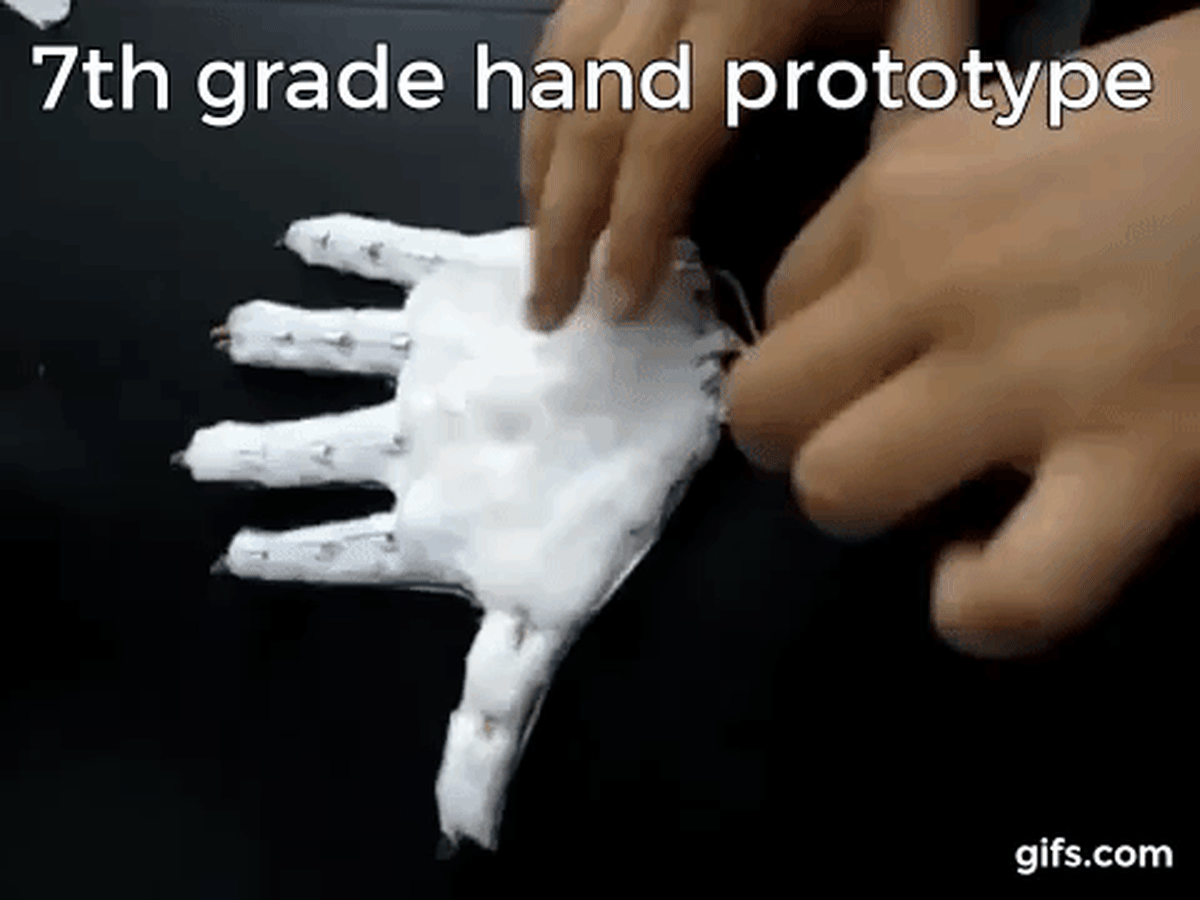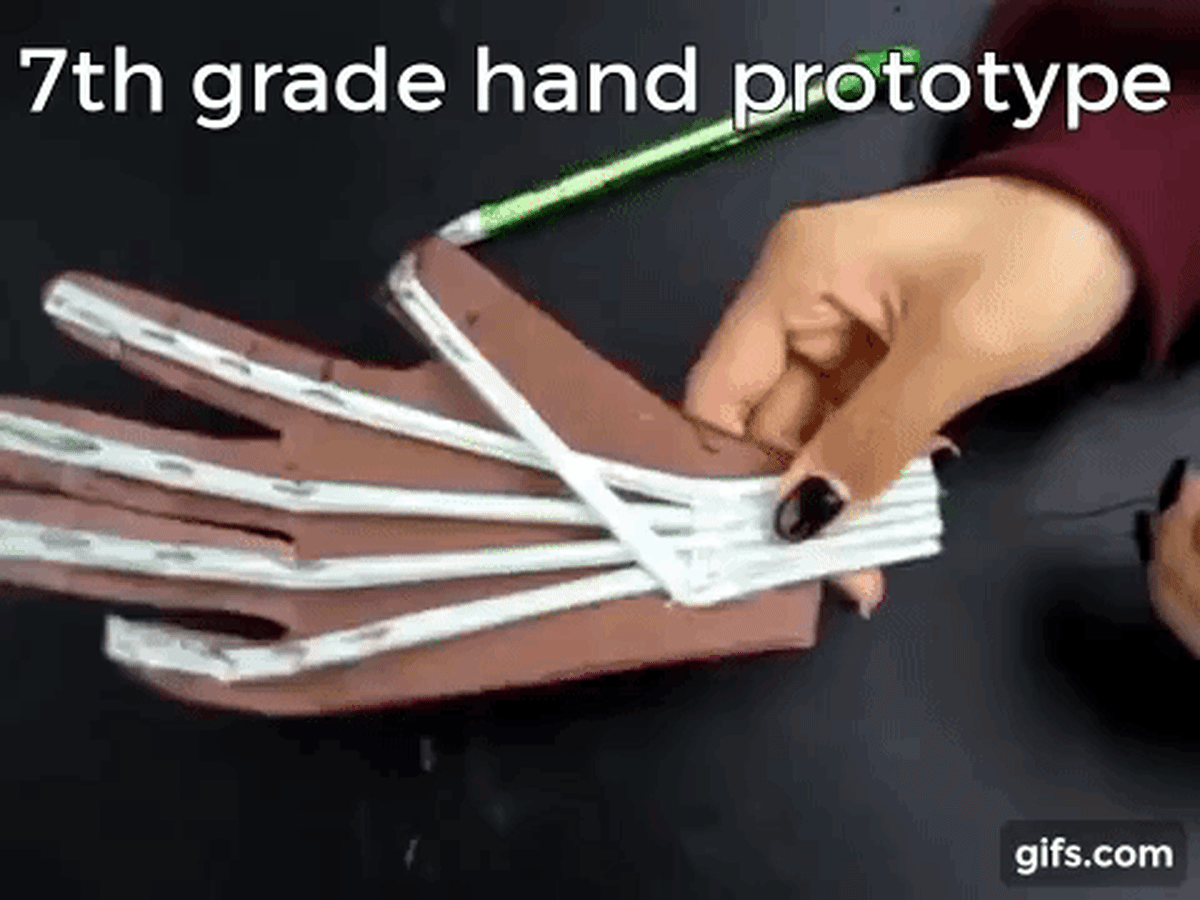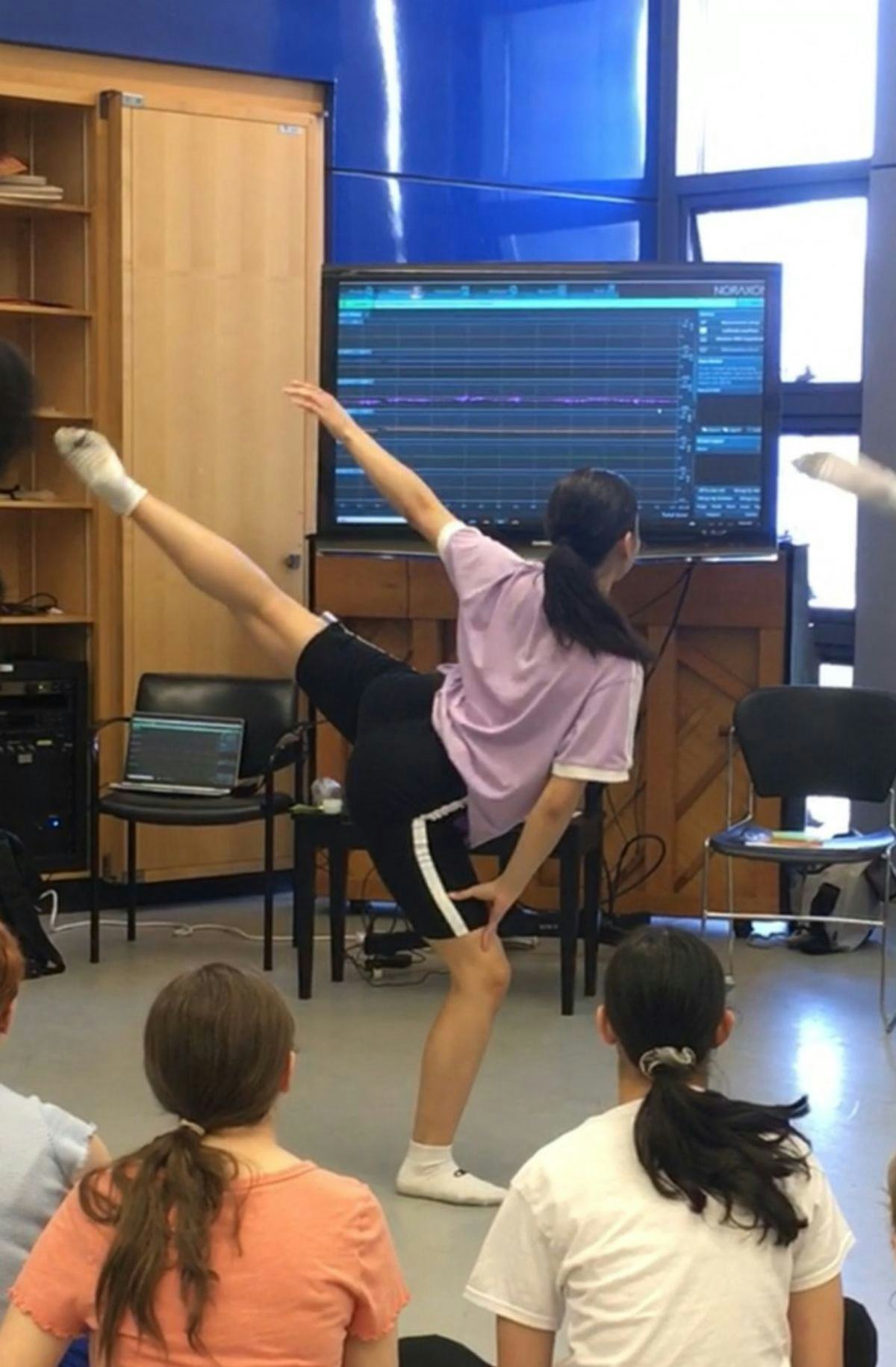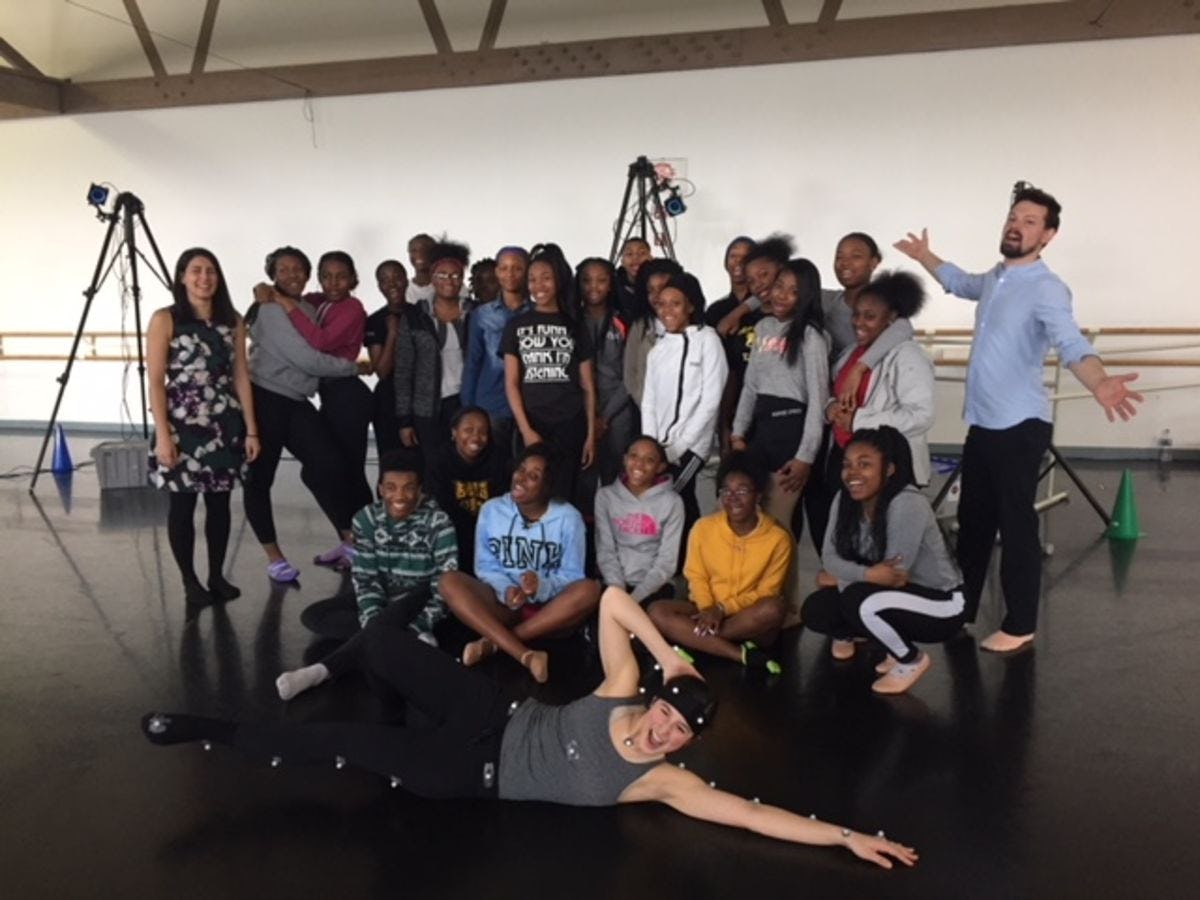From a young age, biomechanical engineer Antonia Zaferiou sought to understand the mechanics of the world around her. Today, she is instilling that same love of engineering in school children.
Within the U.S., women make up only 23 percent of professionals in STEM (science, technology, engineering, and math). Before adolescence, school girls perform just as well at math and science as do boys, but that changes at some point during middle school when their interest in STEM drops off. Through community outreach events such as February’s Introduce a Girl to Engineering! Day and the newly-launched Ask a Stevens Prof free webinars for the public, faculty members at Stevens Institute of Technology aim to inspire school-aged students to pursue STEM careers and diversify the future of STEM.
Antonia Zaferiou, assistant professor in the Department of Biomedical Engineering at Charles V. Schaefer, Jr. School of Engineering and Science, has brought another such event to Stevens: National Biomechanics Day.
Taking place annually in April, Zaferiou brings young people from kindergarten through 12th grades to campus or visits their classrooms. She has been organizing these events for the past four years (even before joining Stevens in January 2019). This year, Zaferiou is organizing the event with assistant professor of the Department of Mechanical Engineering, Johannes Weickenmeier, along with support from Stevens staff Gail Baxter and Mercedes McKay. While this year’s event will be postponed to maintain health and safety during the COVID-19 crisis, a future report will document how National Biomechanics Day grows at Stevens.
Zaferiou’s STEM Story
Zaferiou trained in ballet and contemporary dance from the age of four until college, all while learning about the mechanics of the world around her to satisfy her intrinsic curiosity and drive for knowledge. “Growing up, I loved dancing and building things, disassembling them, and rebuilding them,” she said. “My grandfather was an electrical engineer. When I discovered his workshop and workbench, he taught me about conveying my designs with technical drawings and how to build. He remains my daily inspiration.”
In high school, learning physics came easily to Zaferiou, which she related to her first-hand experiences in dance. “I was most fascinated by understanding how things work, especially how movement manifests,” she said. “With my background in dance, kinetics and dynamics made sense to me because I had grown up experiencing and embodying these phenomena.”
It seemed natural to Zaferiou that she study mechanical engineering in college. While her primary goals were within the engineering world, she maintained a practice of dance as a hobby throughout her studies. When she was introduced to the field of biomechanics, she found this to be the perfect opportunity to merge her mechanical engineering knowledge with her interest in movement—specifically, movement of the human body coupled with music.
Zaferiou shares her “My STEM Story” with kingergarten through twelfth grade students on her personal website.
First experiences in STEM outreach
Zaferiou credits her own higher education for introducing her to outreach. Her first STEM outreach related to dance biomechanics was inspired by her doctoral advisor, Jill McNitt-Gray, who encouraged her to enter a science film contest. The film Dance with Newton’s Laws earned her and her film school collaborator an honorable mention. Following that experience, Zaferiou volunteered for STEM outreach events such as USA Science and Engineering Festival’s “X-STEM”; and has contributed to science films about dance, such as Super Deluxe’s Ballet:ology: Physics of Ballet. The most important catalyst to her commitment to STEM outreach, Zaferiou explained, started as a doctoral student.
“When I was a Ph.D. student at the University of Southern California, the National Science Foundation paired Ph.D. students with middle schooler teachers,” she said. “Twice a week, I taught seventh and eighth graders in Los Angeles public schools. The students were mostly first generation students who were economically disadvantaged and who, by race and ethnicity, were typically underrepresented in STEM fields. I was a fellow of this program, which provided an invaluable lens into the challenges faced by students and teachers in city public schools. It was also an equally invaluable learning experience due to the program’s innovative goals and design.”
Zaferiou describes the goals of this National Science Foundation program as three-fold. First, the participating Ph.D. students improved the way they conveyed their research to the public, offering them an opportunity to improve their science communication and teaching skills. Second, the program fostered a cultural exchange, allowing adolescents to get to know what a Ph.D. student looks like, and giving young and adult students alike the opportunity to talk about their backgrounds. Third, the Ph.D. students worked with teachers to infuse engineering into the curriculum. As the public schools were adopting the Next Generation Science Standards, they wanted to change the curriculum from a model of memorization to one that is more informational and engages youth in “structural” learning—that is, how concepts relate to each other.
Zaferiou explained, “During this program, I was lucky to be paired with a truly remarkable educator, Aida Gamez, to collaborate with her in her classrooms. With nurturing care, she would greet all of her students one at a time outside of the door to see how they were doing. Inside the classroom, she found a way to challenge and engage each student. In her large and crowded classrooms of 35 to 40 students, she was keenly aware of each student’s situation inside and outside of the classroom and how to bring out the best in them. Unfortunately, Aida passed away last year. Since then, I have been trying to honor and emulate Aida’s skills and spirit as an educator.”
Zaferiou and Gamez’s classrooms were seventh- and eighth-grade gender-separated science classes. Without elaborating on the gender-identity and other social issues associated with separating genders at that age, the gender separations in this school taught Zaferiou an important lesson as an educator and revealed general differences between the classrooms. Her male students would rush into class and excitedly ask, “Miss, what are we building today!?”—seeing science class as “play time.” In contrast, her female students were often quiet and reserved as they entered the classroom.
In addition to puberty-related developmental differences between the genders at that age, Zaferiou learned from Gamez that the general home lives of these students were markedly different. Gamez explained that most of their female students were busy at home helping to take care of the household and their younger siblings, while their male students would have time to play. Through Zaferiou’s observations in class, she proposes that the female students were more mature in a specific way: instead of assuming that class was an extension of “play,” they desired a more realistic context to invite them to a classroom activity. This desire to know the “so what?” is, in fact, how most adults approach and filter educational activities to determine if they would like to learn something new. This trend, Zaferiou noticed in her classrooms, has also been published as a reason for girls’ drop-off in STEM interest during middle school.
Zaferiou explained that “In STEM outreach with middle-schooled children, or any scientific communication, it is of the utmost importance to first ‘hook’ the audience by revealing the real-world implications of the science and who it is helping or which real-world problem is being solved.”
She continued, “Once I had the girl classrooms convinced that what we were doing was important to the world (for example, patients needed engineered systems to live) when we were building prototype cardiovascular or prosthetic systems, the girls would leap into innovating, designing, and building extremely sophisticated prototypes with intense intellectual curiosity and rigor.”
Fostering STEM “buy-in” from young audiences
“In order to have buy-in to STEM, we needed to provide real-world context, to show students why they should and need to care,” said Zaferiou.
STEM, it seems, is not something that the majority of girls are cultured to value. There is often no greater proof than visiting a toy store and noting the differences between the sections for toys geared toward “boys” versus “girls.” While this trend is slowly changing, our society often buys building toys for young boys and dolls for young girls. But, through early intervention, Zaferiou and other Stevens faculty are showing girls that they not only can be leaders in STEM fields—but that these fields need their contributions.
“I’ve found that the young students I’ve worked with, regardless of gender identity, want to do something important to benefit the world,” Zaferiou said. “Our job is to find ways to share that participation in STEM is a way to benefit the world. Of course, it helps to deliver the STEM content in ways that connect young students with what they already like doing or learning about.”
Zaferiou continued, “As a biomechanist, I am lucky that most young kids share fascination with activities that intersect with biomechanics. For example, at the start of an outreach event, I often ask students to raise their hands, and keep them raised if they: like dance, music, sports, video games, photography, or movies. At the end, the entire audience has their hands up. I continue to describe how biomechanics is related to all of those fields. While I have their captive attention, then I share real-world examples of how biomechanics helps people and society.”
One type of STEM outreach that is close to Zaferiou’s heart is engaging young dance students in the field of biomechanics. Last year, she partnered with New York University’s Harkness Center for Dance Injuries and the Nicholas Institute of Sports Medicine and Athletic Trauma to visit a high school dance class for National Biomechanics Day. In her interactive lesson, she presented the young dance students with an open-ended design challenge to choreograph a dance that activates a muscle they were assigned.
“Open-ended design challenges are paramount to engineering outreach activities, because it allows for more than one answer, and ensures that young students know that creativity is welcomed and celebrated,” Zaferiou said.
In these dance-specific outreach events, students have shared how excited they are to now know about biomechanics as a way to link dance and school. In fact, by learning about biomechanics, some students have shared that they are excited to use physics concepts in their dance practice.
One student sent Zaferiou a handwritten note expressing, “I was surprised by the field in general! I didn’t know biomechanics existed, and I love the combination of movement and science and a new way to use dance (what I love) and academics.”
It takes a village
Zaferiou shared that her outreach activities require teamwork: “Throughout the years, I have been fortunate to collaborate with people who are equally dedicated to broadening participation in STEM.”
At her former affiliation, Rush University Medical Center, Zaferiou collaborated with her lab manager, Christopher Knowlton and other lab affiliates like undergraduate research assistants, doctoral students, and postdoctoral fellows. “National Biomechanics Day 2018 was a tremendous collaborative undertaking, as we took all of our lab equipment to Hubbard Street Dance Chicago and offered four concurrent interactive lessons that high school dance students rotated through,” she said. “We even engaged with community partners to sponsor our event to ensure that students had buses to bring them to the dance school. Through collaboration, outreach events can reach more students for a larger impact.” Zaferiou is happy to see that Rush University Medical Center has continued to grow their National Biomechanics Day outreach events.
This year at Stevens, Zaferiou and Weickenmeier will collaborate with other Stevens faculty and students to celebrate National Biomechanics Day by sharing biomechanics with newest generation. She hopes that this will establish National Biomechanics Day as a collaborative tradition into the future.
In addition, Zaferiou’s NSF CAREER award includes two distinct educational plans that will further develop our community’s dedication to STEM outreach. One activity is to grow Zaferiou’s STEM outreach to grades sixth through twelfth dance students. The other activity includes preparing a course in which Stevens students will develop biomechanics devices and lessons to use during outreach.
Learn more about biomedical engineering at Stevens:
Learn more about research in the Department of Biomedical Engineering →







